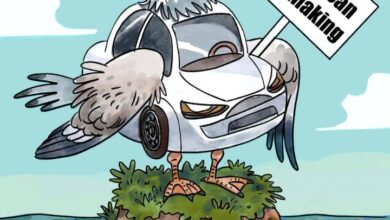From The Roads To The Skies: Whatever Happened To Saab?

Saab is an acronym of “Svenska Aeroplan Aktiebolaget,” which means “The Swedish Aeroplane Corporation.” Founded by AB Bofors in 1937, the company quickly scaled up production as Europe armed itself in anticipation of World War II. Vicious acquisitions of competing companies helped it grow even faster, and exclusive contracts with the Swedish government made Saab the main name for aircraft manufacturing.
After the war, Saab created an automobile division, launching its first model in 1949. Meanwhile, the parent company continued to fulfill defense contracts, producing radar, submarine, and aircraft technology. For example, the Saab 32 Lansen aircraft was so ahead of its time that it served the Swedish Air Force for 41 years.
Defense contracts were Saab’s bread and butter, but the world soon associated Saab with their unique cars. Loyalists lauded the quality of Saab sedans, while budgeters lamented the luxury prices. Regardless of the reputation, however, the division was struggling.
In 1989, the division separated from its parent and became an independent company called Saab Automobile AB. During the restructuring, General Motors purchased a majority share. The American auto giant released the most iconic models during this period.
After the death blow of the 2008 recession, Saab Automobile AB filed for bankruptcy in 2011. The broke estate was purchased by Spyker Cars N.V. and then by National Electric Vehicle Sweden (NEVS). In a last-ditch effort to save the company, NEVS released the 2012 Saab 9-5 SportComb, but it was promptly banned for sale in the US. Then, the final straw came from Saab itself, when Saab AB prohibited NEVS from using its name in 2014. Saab Automobile was officially defunct.
[Featured image by Milan Nykodym via Wikimedia Commons | Cropped and scaled | CC BY 2.0]



